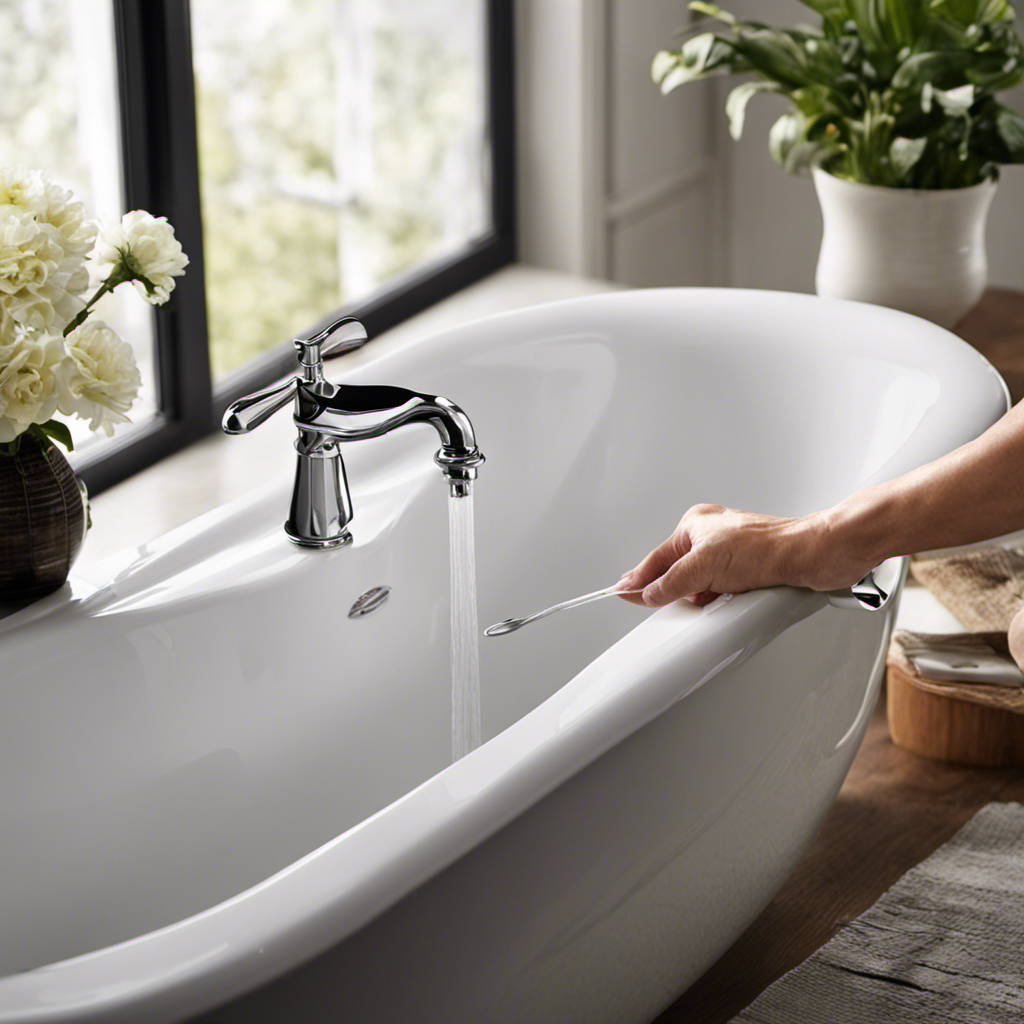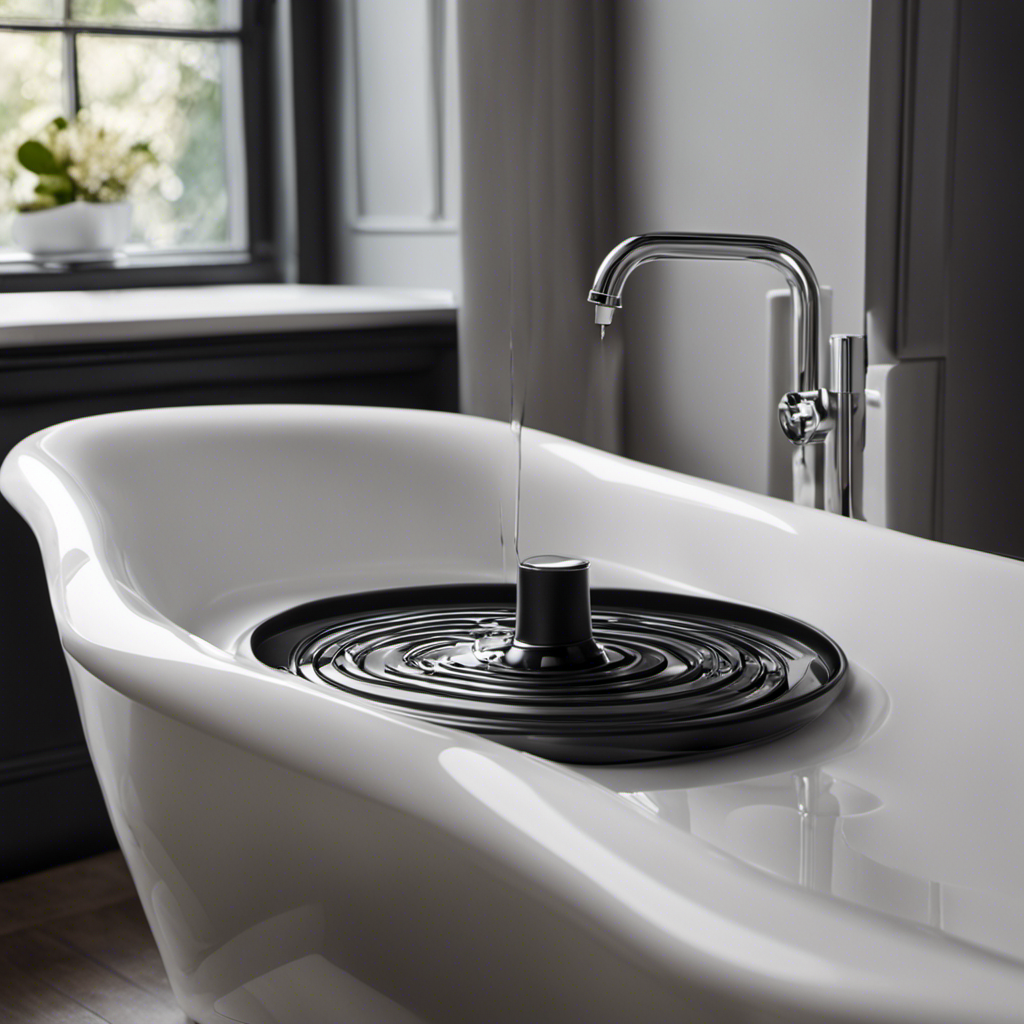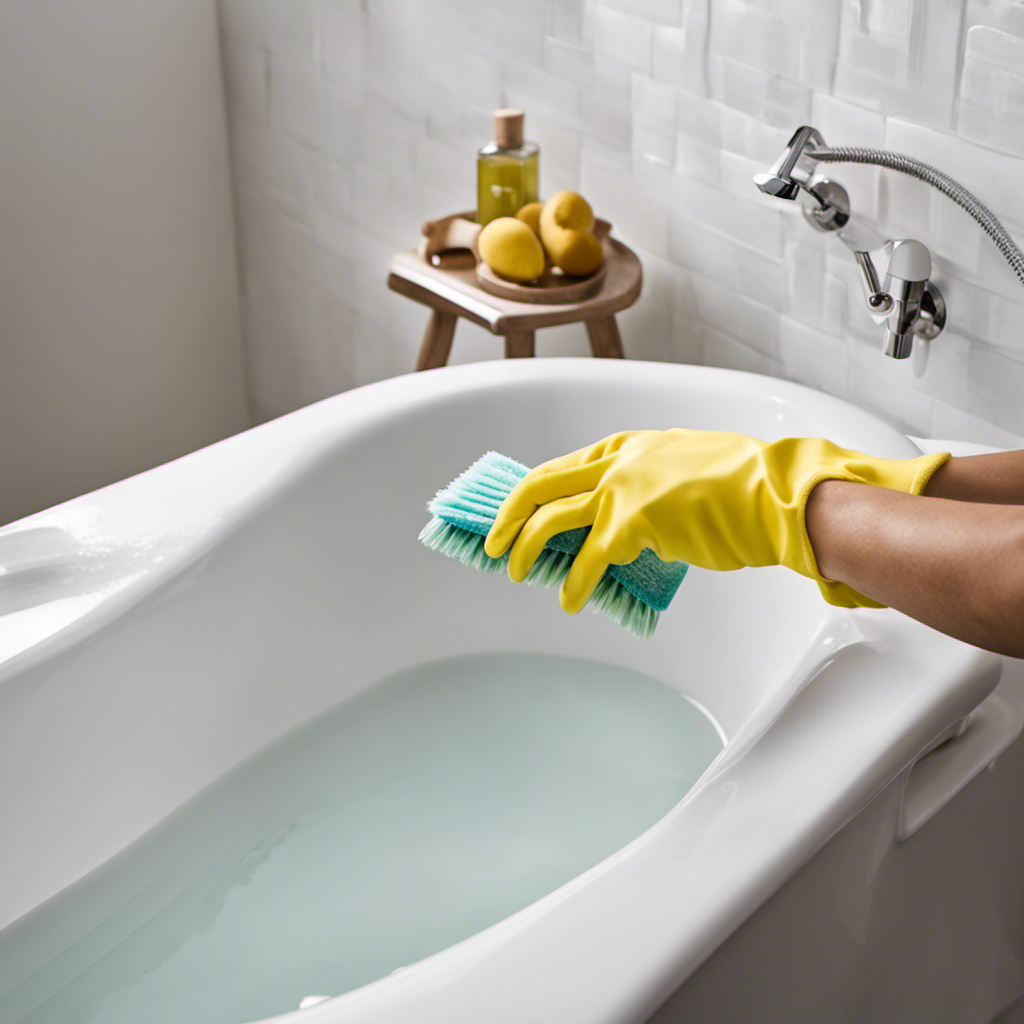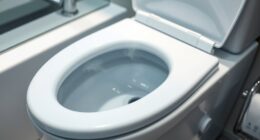Did you know that a leaky bathtub faucet can waste up to 3,000 gallons of water per year? That’s enough to fill 45 bathtubs!
In this article, I’ll show you how to stop that annoying drip and save both water and money. By following these simple steps, you’ll be able to:
- Identify the source of the leak
- Turn off the water supply
- Remove and replace the faulty parts
- Test the faucet to ensure it’s working properly.
Let’s get started!
Key Takeaways
- Leaky bathtub faucets can waste a significant amount of water, up to 3,000 gallons per year.
- Signs of a leak include constant dripping, water pooling around the base, and difficulty in turning the handles.
- Common causes of leaks are worn-out washers, damaged O-rings, or faulty cartridges.
- Fixing leaks not only saves money on water bills but also helps conserve water and protect the environment.
Identify the Source of the Leak
You should start by turning off the water supply to your bathtub to prevent any further leaking.
Identifying the source of the leak is crucial in fixing a leaky bathtub faucet. There are several common causes for a leaky faucet, such as worn-out washers, damaged O-rings, or faulty cartridges.
Signs and symptoms of a leak may include constant dripping, water pooling around the base of the faucet, or difficulty in turning the handles.
To determine the cause, you can start by inspecting the faucet handles and spout for any visible signs of damage or wear. Additionally, you may need to disassemble the faucet to examine the internal components for any signs of deterioration.
Remember to turn off the water supply before attempting any repairs.
Turn off the Water Supply
To prevent further water flow, it’s important to shut off the water supply. Here are four reasons why water conservation tips and fixing faucet leaks are crucial:
-
Save money: A leaky faucet can waste gallons of water, leading to higher water bills. By fixing the leak, you can save money on your monthly expenses.
-
Environmental impact: Conserving water helps protect our precious natural resources. Fixing leaks reduces the strain on water sources and helps preserve ecosystems.
-
Water shortage: With the increasing global population, water scarcity is a growing concern. By fixing leaks, we can prevent unnecessary water waste and ensure availability for future generations.
-
Health and hygiene: Standing water from leaks can create a breeding ground for bacteria and mold, compromising our health and hygiene. Fixing leaks promotes a clean and safe environment.
Remove the Faucet Handle
Once you’ve successfully shut off the water supply, it’s time to remove the faucet handle. This step is crucial in the process of fixing a leaky bathtub faucet.
To start, locate the set screw on the handle. It is usually located underneath a decorative cap or cover. Using a screwdriver or Allen wrench, loosen and remove the set screw.
Once the set screw is removed, gently pull the handle straight out. Be careful not to force it as this may cause damage.
Once the handle is removed, you can access the inner components of the faucet. Proper maintenance tips for bathtub faucets include regularly cleaning the aerator and replacing worn out washers and O-rings.
Common causes of leaky bathtub faucets are worn out washers and O-rings, which can be prevented by replacing them periodically.
Replace or Repair the Faulty Parts
After removing the handle, it’s important to determine whether you need to replace or repair the faulty parts. Here are the common causes of faucet leaks and the repair vs. replace dilemma:
-
Worn out O-rings: These small rubber rings can deteriorate over time, causing leaks. Repairing them is a cost-effective solution.
-
Faulty cartridge: This component controls the flow of water. If it is damaged, replacing it might be necessary to stop the leak.
-
Corroded valve seat: This can occur due to mineral deposits in the water. Repairing or replacing the valve seat can solve the issue.
-
Cracked or damaged pipes: If the leak originates from the pipes, repairing or replacing them is essential for a permanent fix.
Consider the severity of the leak, the age of the faucet, and the cost of replacement parts when deciding whether to repair or replace the faulty parts.
Test and Reassemble the Faucet
Now that you have assessed the faulty parts, it’s time to test and reassemble the faucet.
To ensure the faucet is functioning properly, follow these faucet maintenance tips.
First, turn on the water supply and check for any leaks. If you notice any drips, it could indicate a problem with the reassembled parts.
Take apart the faucet again and inspect the seals, washers, and O-rings for any signs of wear or damage. Replace any faulty components and reassemble the faucet, ensuring everything is tightly secured.
Once reassembled, turn on the water supply and test the faucet for leaks again. If the issue persists, it may be necessary to consult a professional plumber to diagnose and fix the problem.
Conclusion
So there you have it, a step-by-step guide on how to stop a leaky bathtub faucet. By following these simple instructions, you can save yourself the hassle and expense of calling a plumber.
Remember, identifying the source of the leak, turning off the water supply, removing the faucet handle, and replacing or repairing the faulty parts are crucial steps in fixing the problem.
Don’t let that annoying drip continue to waste water and drive you crazy – take action today and enjoy a leak-free bathtub!










